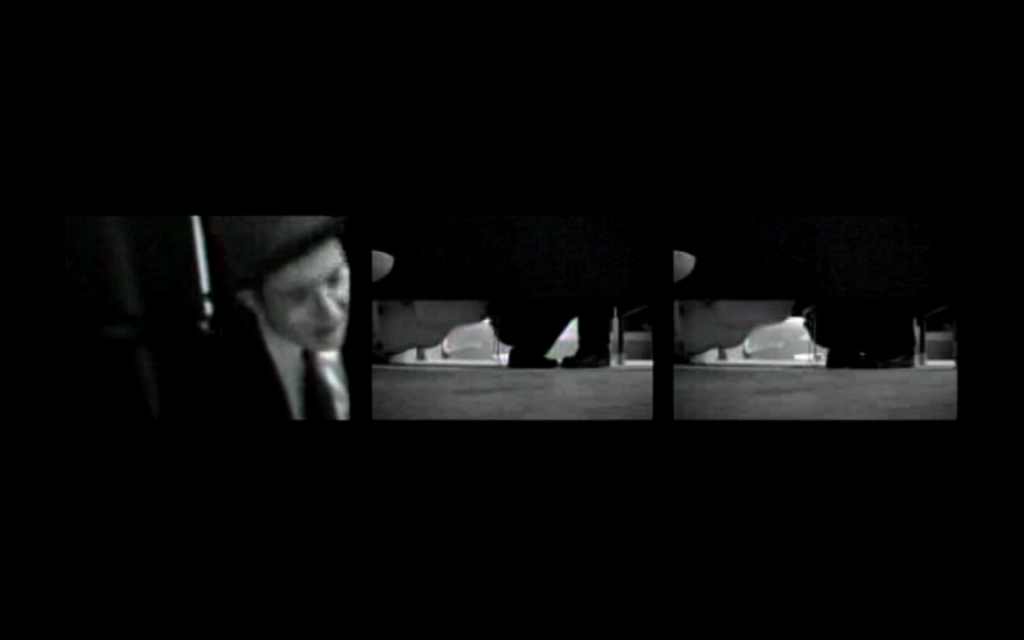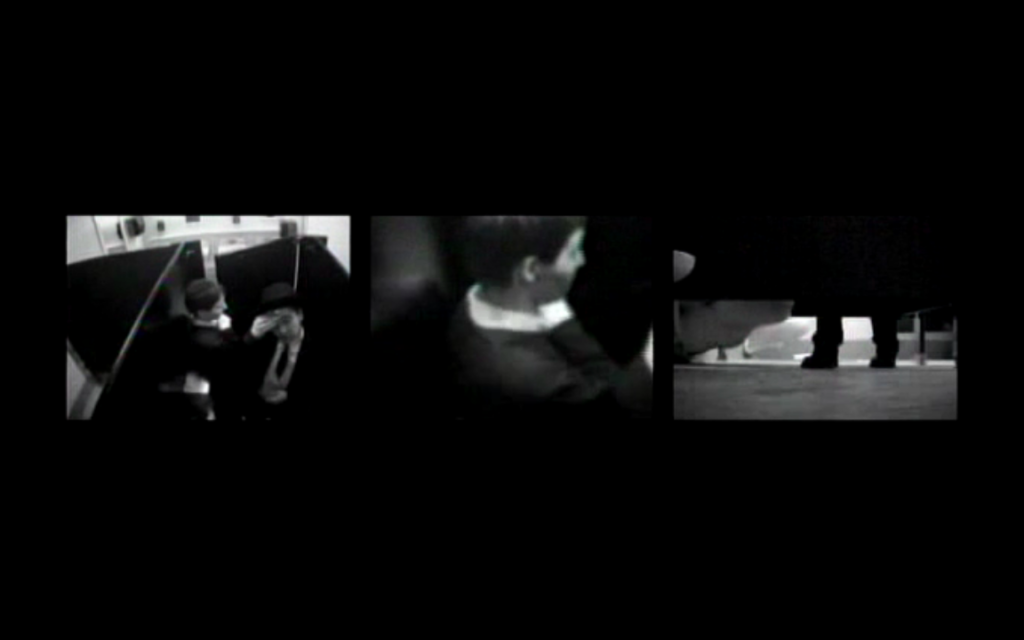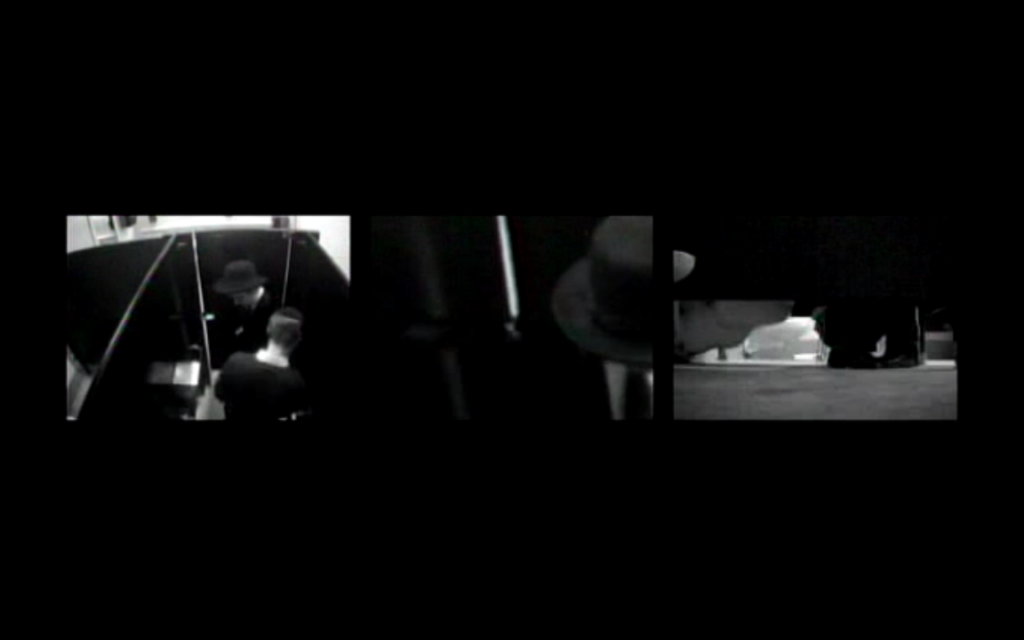
Video installation derived from performance intervention about conceptual space that is sacred. This is not a location determined by degrees of longitude and latitude, but a four-dimensional moment. The text chanted is Yedid Nefesh, a prayer-poem by one of the great Kabbalists of sixteenth-century Tsfat, R’ Eliezer Azikri. This text, for the poets physical and passionate expression of yearning for the Place, the Moment, is read by some as an expression of an ecstasy that is particularly homoerotic. I am fascinated by the complex power dynamics of implied age difference between the subjects. I have described the piece as a self-portrait: I am the man, I am the boy, I am the stall. The piece began as a performance interrogating what others have found in me exotic, simultaneous to an exploration of what fraternal space might mean for me.

Screening history:
2004 Trannies on Film Festival, New College Cultural Center, California. Fresh Meat Productions.
2002 screening in Tongue-n-Cheeks Collective, at DUMBA, New York
2002 screening in Tongue-n-Cheeks Collective, at Le Petit Versailles, New York
2002 screening in Tongue-n-Cheeks Collective, at Space 1026 in Philadelphia
2002 Chicago Leather Archives, Chicago, Illinois. Barbara DeGenevieve curator.
2002 MIX: the 16th annual New York Lesbian and Gay Experimental Film and Video Festival “Fluid Sexualities” program. Maya Deren Theatre, Anthology Film Archives, 2nd Floor.
Exhibition history (video installation version of 1999 performance) ∞
October 2006–January 2007. Transvideo, New Media Gallery, Madison Museum of Contemporary Art, Madison, Wisconsin. (group exhibition including works by Yinka Shonibare, Jayce Salloum, Richard Fung, Ursula Biemann, Ximena Cuevas, CM Weems) Curator Jill Casid. (censored)
2004 ‘NeoQueer’ at Center on Contemporary Art, Seattle
2004 Chicago Trans/Genderqueer Film/Video Festival, Women in the Directors Chair, Chicago.
2002. The Community Center Project of San Francisco, Grand Gala Opening. The LGBTQ Center. San Francisco, California. Jordy Jones, curator.
2002 SAIC MFA exhibition (censored)
Live version (performance with live video feed)
2001 Links Hall. “Performing the Problematic” Barbara Degenevieve, Sheelah Murthy curators.
2000 School of the Art Institute of Chicago

Publication history:
“Voice, Performance and Border Crossings: an interview with Tobaron Waxman” Johnson, Dominic. TSQ 1:4. Duke University Press, 2014.
excerpt: “Barbara pushed me to realize that the only way I might have access to places I was otherwise forbidden to go was through my work. I made Self Portrait #1: Reverence, a performance using motifs from Judaism, liturgy, and homoerotics, to gain access to sacred sanctums of masculinity—the men’s toilet, the male intergenerational homoerotic bond, and the men’s prayer space. I had no vision of what I could become, because this had never been done before. I described it as a self-portrait, saying, “In this piece, I am the man, I am the boy, and I am the stall.” The other performer is physically smaller than me and not wearing a hat, so he becomes the “boy.” You don’t see the face or mouth of the “boy” in the scene; he is squatting down in front of me. You see my orthodox man’s hat, my face, singing, my movement simultaneously praying and thrusting. In the triptych, you see our shoes, facing each other in profile in the stall, his tsitsis swaying. It looks like a patterned, secret liaison. The soundtrack is the asynchronous vocal singing a prayer, in the acoustics of the men’s toilet. Faculty and administrators, mostly nontrans gays, had a hard time accepting that I could render religion and homoerotics or queer sex in the same frame, and they insisted on reading Self Portrait #1 as an image condemning statutory rape. I had to disclose to the School of the Art Institute of Chicago’s lawyer whether or not I was wearing a strap-on and engage on the whole discussion of whether or not this is a simulated sex act and whether the performer’s youthful look meant that the creation and consumption of the image was to be considered illegal. That’s when I had to change the title to Self Portrait #1: Reverence because, again, people wanted work by a trans person to be documentary, and the relationship of sex to the spirit/emotion as criminal rather than reverent. This was the first of a few times when the youthful appearance of FTMs in my early work made administrators very upset with me. I was threatened with deportation over that at the School of the Art Institute of Chicago. Reverence was also censored in my first major museum exhibition in 2006, one week before opening, in Madison, Wisconsin, when the museum director feared a mythic and faceless group of Jews would be upset with him. I gave them instead Techiat ha Metim, a performance video critical of the apartheid wall, and they showed that instead.”